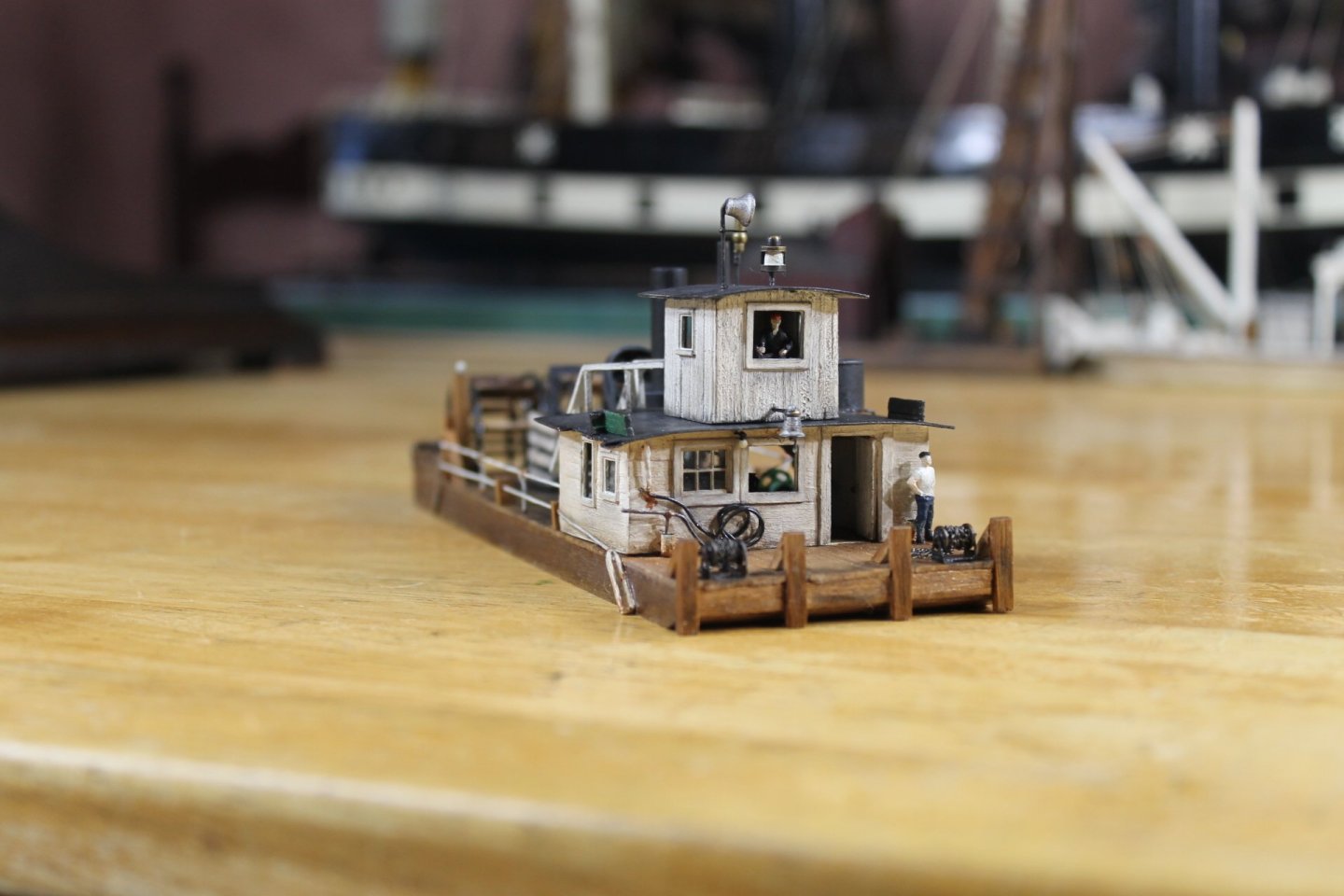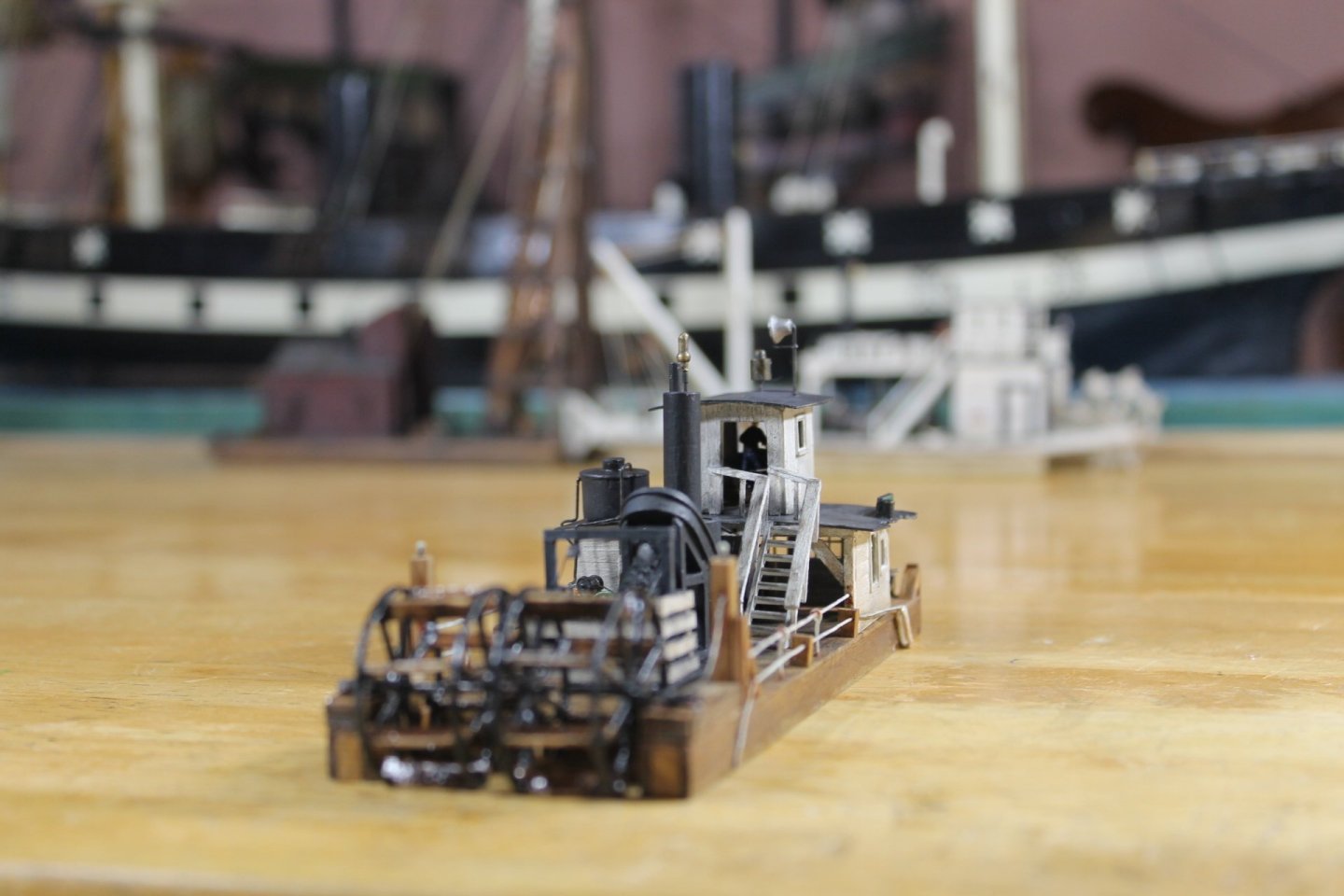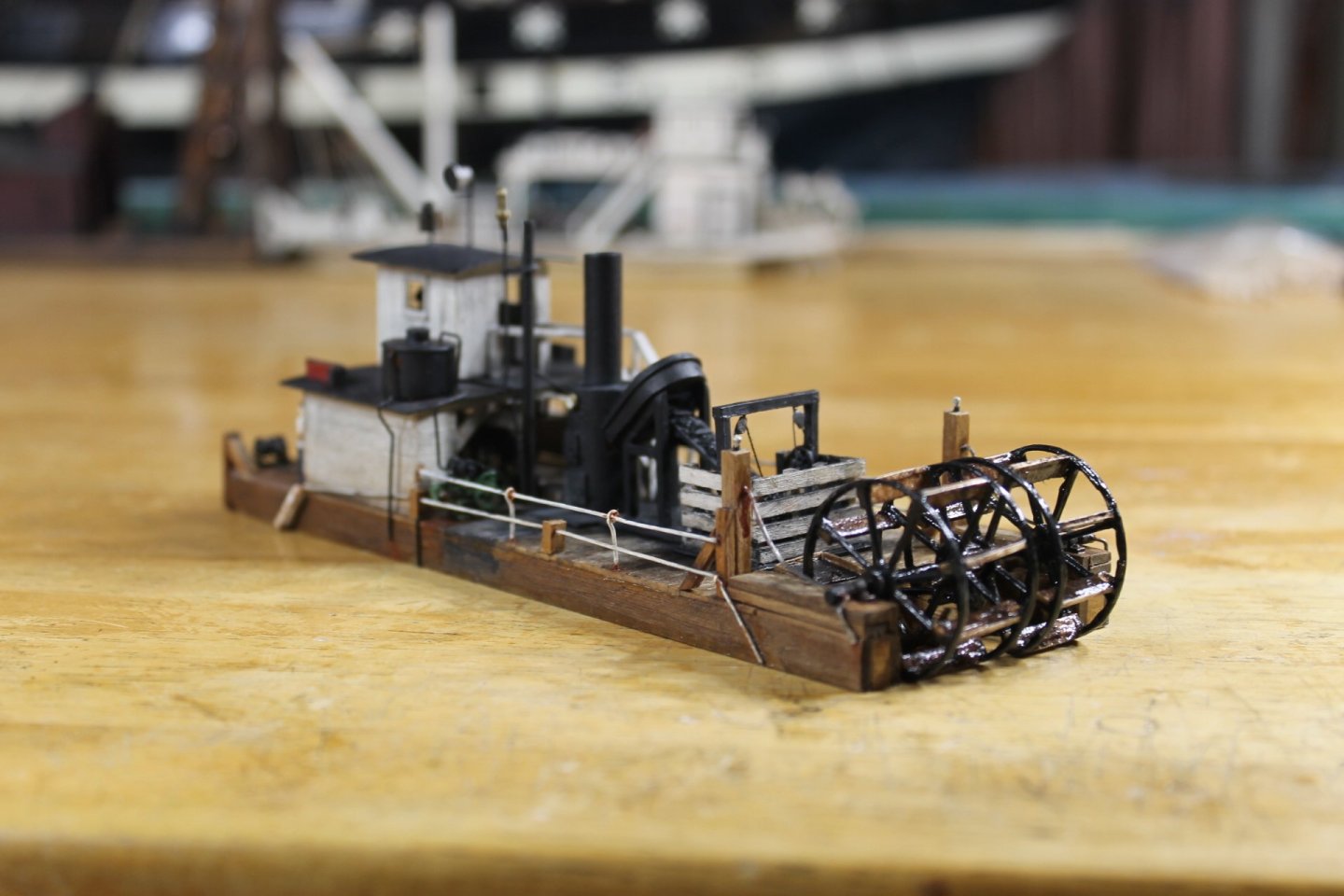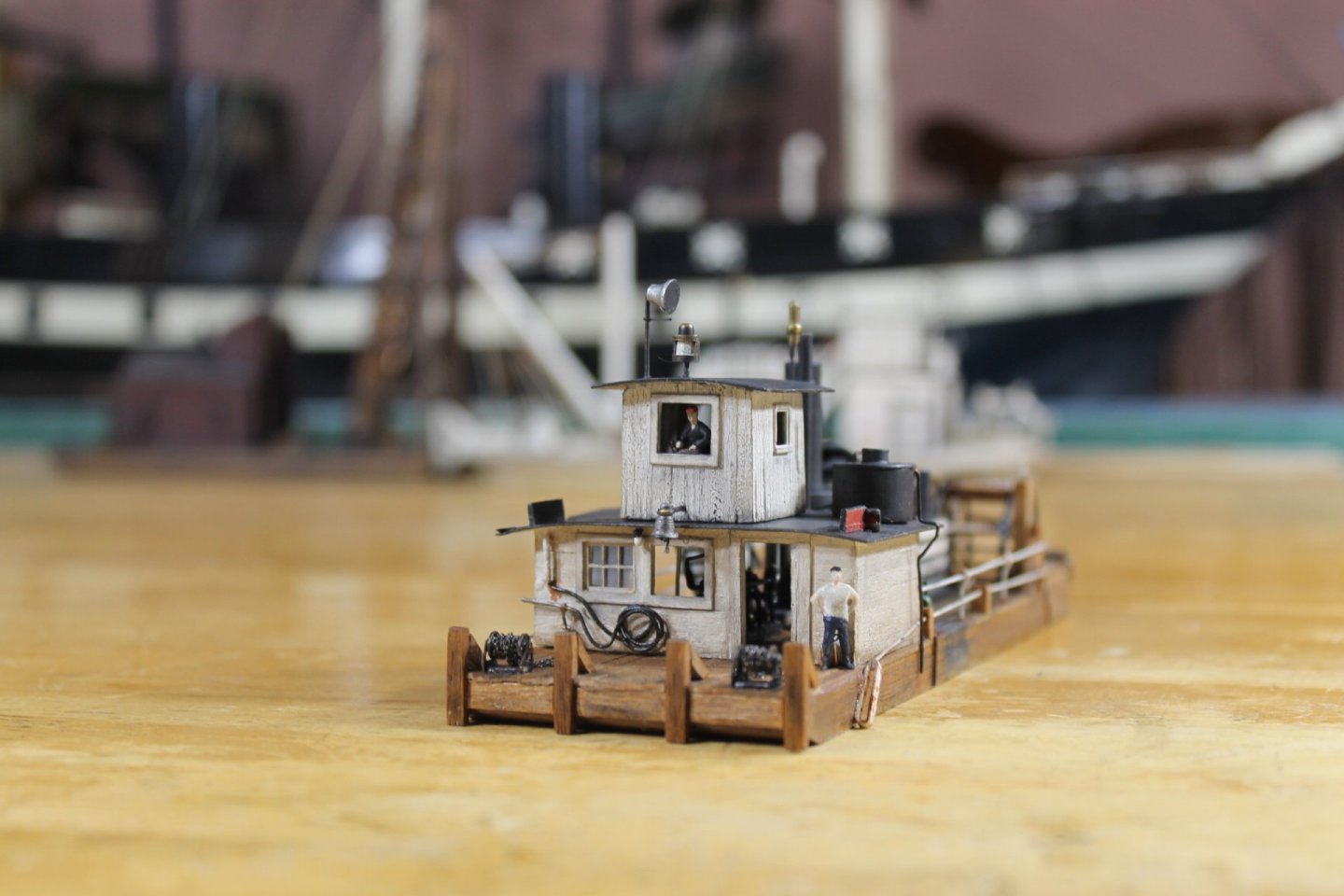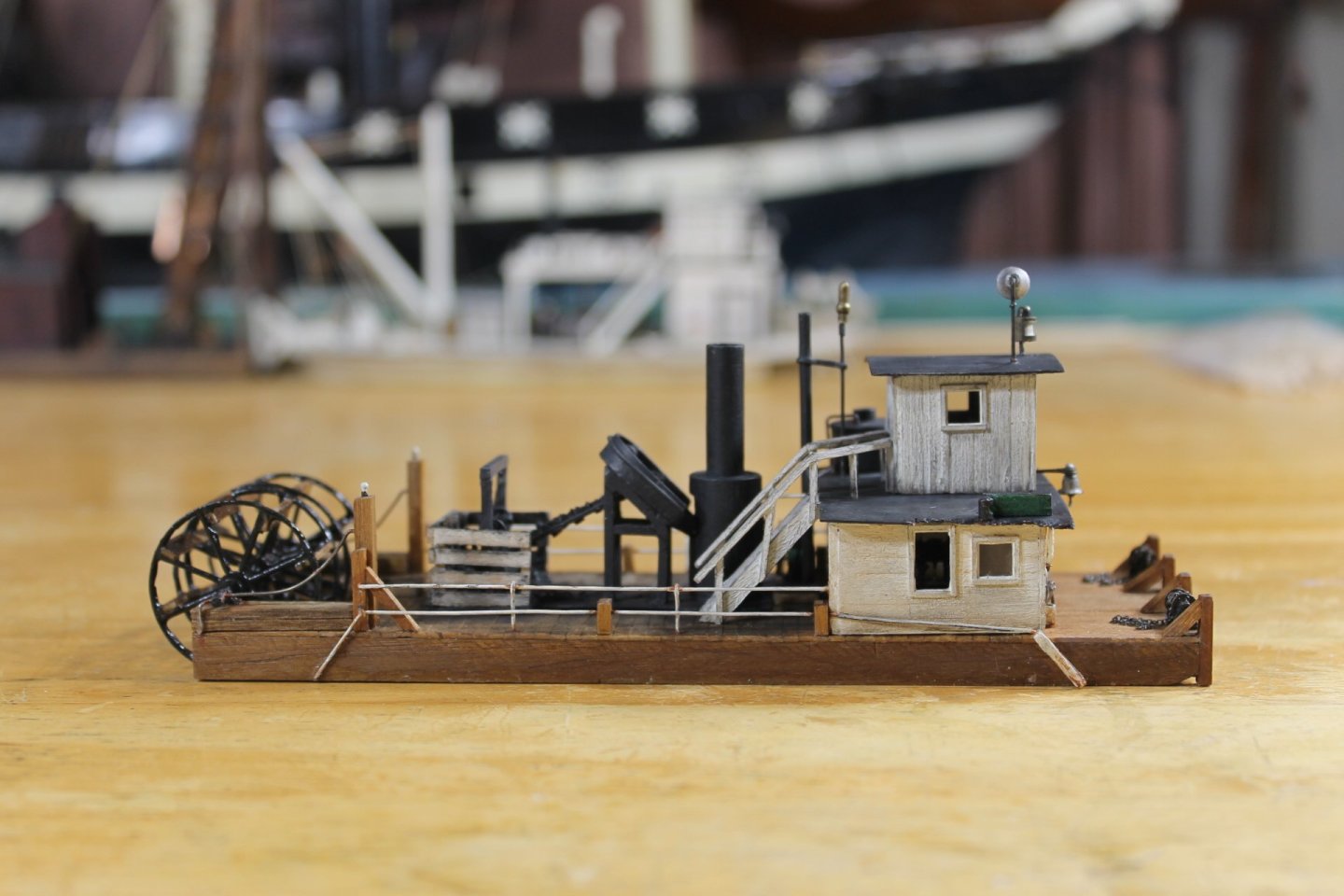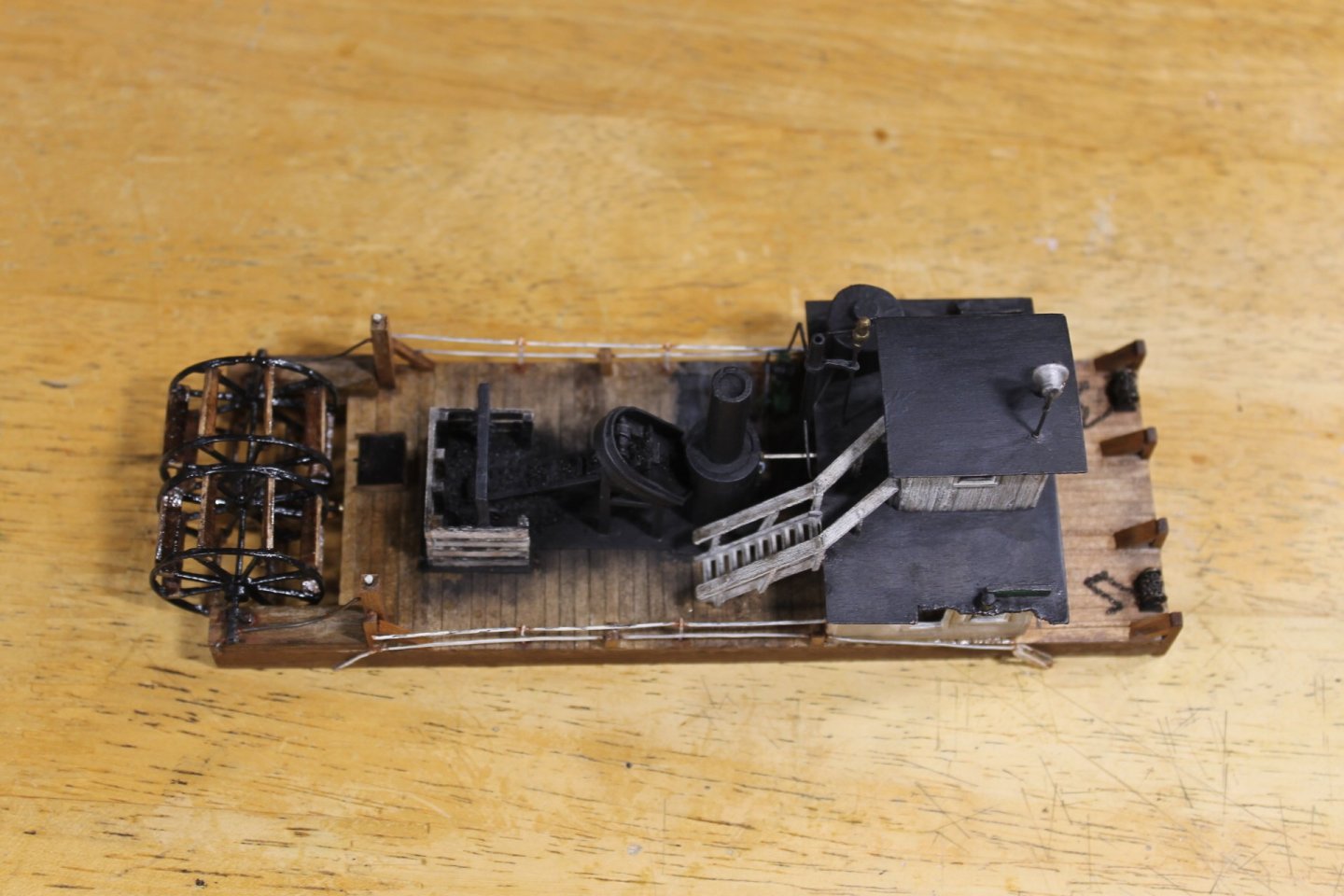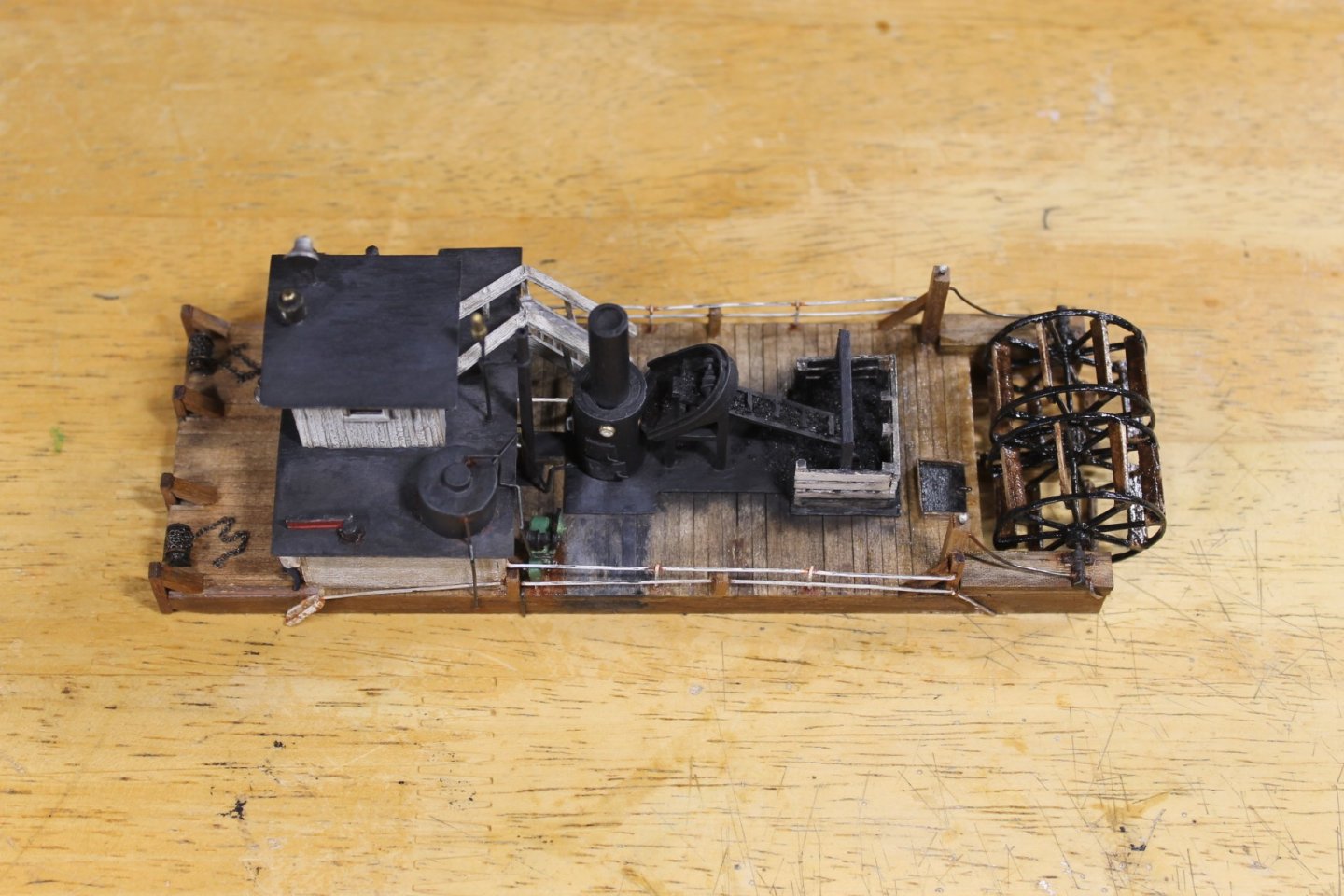-
Posts
6,603 -
Joined
-
Last visited
Content Type
Profiles
Forums
Gallery
Events
Everything posted by Keith Black
-
John, I'm thinking a thin mix of drywall joint compound and sand. It needs to give the impression of a wet slurry mix with hints of anthracite peeking through. I think getting the color right is going to be the make or break part of successfully replicating the dredging material.
- 457 replies
-
- sternwheeler
- Hard Coal Navy
-
(and 1 more)
Tagged with:
-
Keith, you have built/are building beautiful models. Far far from ugly ducklings. Eric, I'm glad you think this ugly little towboat is worthy. I think an ugly barge will tie the package together nicely.
- 457 replies
-
- sternwheeler
- Hard Coal Navy
-
(and 1 more)
Tagged with:
-
Rick, it gets easier after the last knot is tied. Rigging is a difficult long drawn out process that at times seems never ending.
- 345 replies
-
- Flying Fish
- Model Shipways
-
(and 1 more)
Tagged with:
-
Thank you to everyone for the kind comments and the likes. I've decided the barge size will be approximately 30 x 100 feet. It will be a simple barge without any dredging equipment as seen in the photo below (the barge stern, towboat bow) and will be pretty rough in appearance. I think creating realistic dredged material will be the most challenging part of the build. It just keeps gettin' uglier. Keith
- 457 replies
-
- sternwheeler
- Hard Coal Navy
-
(and 1 more)
Tagged with:
-
Thank you very much, Ken. Thank you for the kind comment, Keith
- 457 replies
-
- sternwheeler
- Hard Coal Navy
-
(and 1 more)
Tagged with:
-

[taboo] The Sloop Liberty Inquiry
Keith Black replied to Redondo113's topic in New member Introductions
Redondo, welcome to MSW. Wishing you well with your research. Glad to have you aboard. -
Thank you very much, Grant. Thank you so much, LJP. Thank you, Eberhard. I'm still trying to learn weathering techniques, I wish I was accomplished as you are in that regard. That's nice of you to say, Phil, thank you. Thank you very much, Jacques. I'll be building the barge in this build log, thank you for asking.
- 457 replies
-
- sternwheeler
- Hard Coal Navy
-
(and 1 more)
Tagged with:
-
Thank you very much, Paul. I still have the barge to build but I've got to step away from the worktable for a week or so to get some neglected yard and house work done.
- 457 replies
-
- sternwheeler
- Hard Coal Navy
-
(and 1 more)
Tagged with:
-
Thank you for the comments and likes. This ugly Hard Coal Navy towboat is done with the exception of a couple of spots I noticed in the photos that need to touch up but that's only a matter of a couple of minutes effort. The deckhand has taken his rightful place. I like this view because the skipper can be seen in the pilothouse. When the boiler's firebox in cleaned out the clinkers and ash are flat nose shoveled over the side. I have extra chain in the winches but won't know how much until the barge is lashed. Thank you so much for your support and for taking the time to follow this journey. Keith
- 457 replies
-
- sternwheeler
- Hard Coal Navy
-
(and 1 more)
Tagged with:
-
Gerardo, welcome to MSW. Glad to have you aboard.
-
The railings look fantastic, Glen. As to painting, I don't understand the issue, after the stern is finished why can't you match the paint as best as you can and paint the whole? I must be missing something other than the obvious.
- 156 replies
-
- Queen Annes Revenge
- bottle
-
(and 1 more)
Tagged with:
-
I don't think a cat would make it on this rig, Craig. I don't see a cat friendly corner anywhere. I wish there was because if there were I'd add a cat in a heart beat.
- 457 replies
-
- sternwheeler
- Hard Coal Navy
-
(and 1 more)
Tagged with:
-
Thank you for the kind comment, Glen. I'm glad that 5 gallon bucket is full of acorns and not something else. Thank you very much, Paul. The deckhand is waiting in the wings, it'll not be long till we'll see him standing on the bow, daydreaming as he blank stares at the distance bank of the Susquehanna.
- 457 replies
-
- sternwheeler
- Hard Coal Navy
-
(and 1 more)
Tagged with:
-
Thank you, Jacques. I think I did a better job keeping to scale on this build which really helps with the realism. Thank you very much, John.
- 457 replies
-
- sternwheeler
- Hard Coal Navy
-
(and 1 more)
Tagged with:
About us
Modelshipworld - Advancing Ship Modeling through Research
SSL Secured
Your security is important for us so this Website is SSL-Secured
NRG Mailing Address
Nautical Research Guild
237 South Lincoln Street
Westmont IL, 60559-1917
Model Ship World ® and the MSW logo are Registered Trademarks, and belong to the Nautical Research Guild (United States Patent and Trademark Office: No. 6,929,264 & No. 6,929,274, registered Dec. 20, 2022)
Helpful Links
About the NRG
If you enjoy building ship models that are historically accurate as well as beautiful, then The Nautical Research Guild (NRG) is just right for you.
The Guild is a non-profit educational organization whose mission is to “Advance Ship Modeling Through Research”. We provide support to our members in their efforts to raise the quality of their model ships.
The Nautical Research Guild has published our world-renowned quarterly magazine, The Nautical Research Journal, since 1955. The pages of the Journal are full of articles by accomplished ship modelers who show you how they create those exquisite details on their models, and by maritime historians who show you the correct details to build. The Journal is available in both print and digital editions. Go to the NRG web site (www.thenrg.org) to download a complimentary digital copy of the Journal. The NRG also publishes plan sets, books and compilations of back issues of the Journal and the former Ships in Scale and Model Ship Builder magazines.





